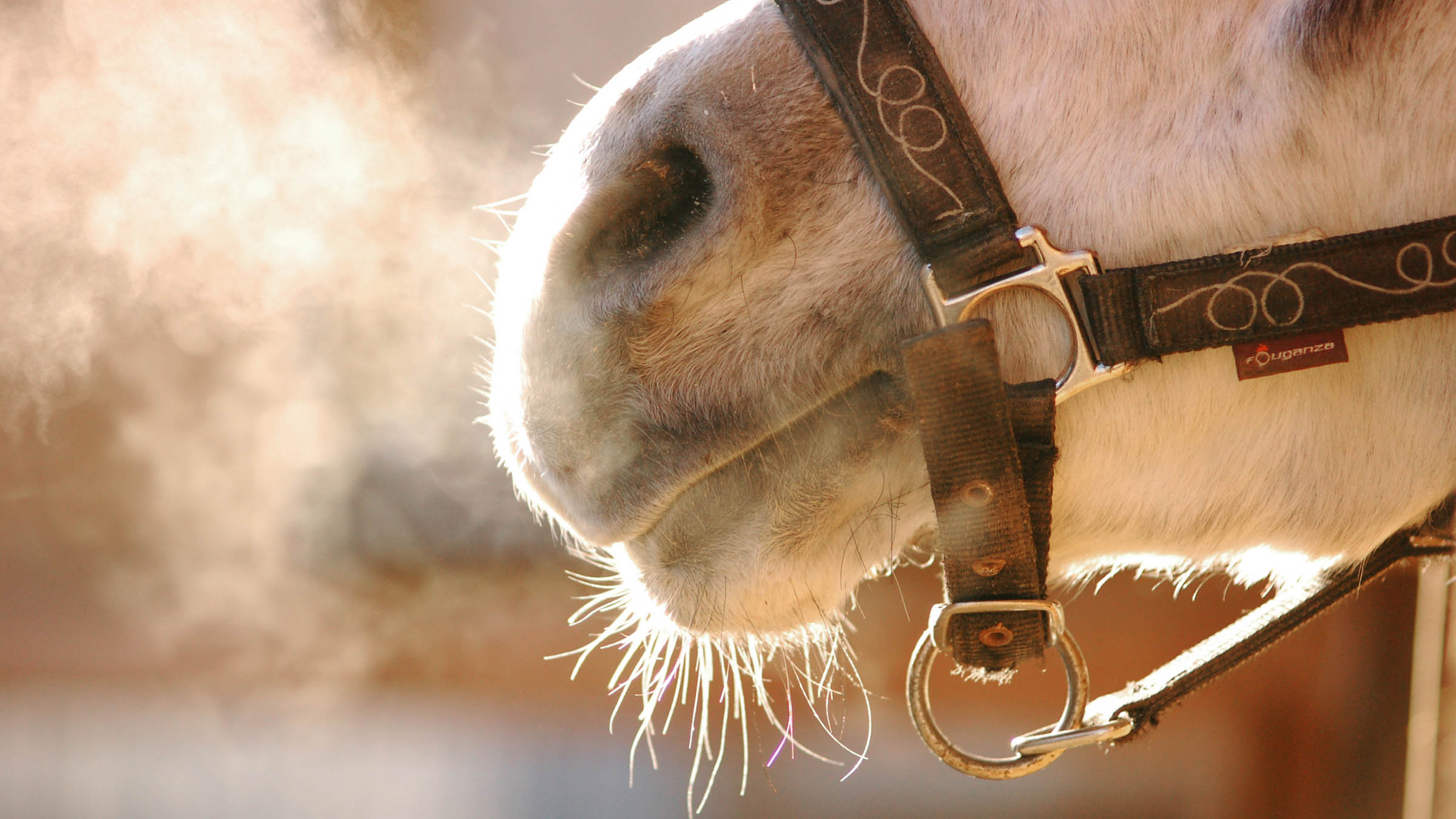
Equine herpes virus
You've probably heard of "equine herpes". Equine herpes viruses (abbreviated to EHV) - similar to herpes viruses in humans - are found in almost all horse populations worldwide. The two types EHV-1 and EHV-4 cause the most commonly diagnosed diseases. In addition to the respiratory symptoms that can be caused by EHV-1 and EHV-4, the neurological symptoms caused by EHV-1 are particularly feared.
The virus is transmitted directly from horse to horse via droplet infection through nasal and eye secretions, but also via contaminated objects such as pitchforks, wheelbarrows, halters or bedding. Your horse can also become infected through contact with the infected afterbirth or birth secretions of other horses. Once your horse has been infected with EHV, it will remain an EHV carrier for the rest of its life. The equine herpes viruses have the ability to remain dormant in the horse. During this phase - also known as the latency phase - your horse will not show any symptoms. The virus can be reactivated by stress or a change of stable. Infected horses can sporadically become virus shedders without showing symptoms themselves. This means that these horses appear to be completely healthy but can still infect other horses with EHV. The horses in which the virus has been reactivated can also become ill and then show clear symptoms of illness. You can find out what you should look out for here.
SYMPTOMS
Symptoms
Possible symptoms of EHV disease of the respiratory tract
- Biphasic fever (i.e. fever days alternating with fever-free days) between 38.5 and 41 °C with fatigue and reluctance to eat
- Enlarged lymph nodes
- Nasal and ocular discharge
- Neurological symptoms may also occur
Possible symptoms of EHV disease affecting the nervous system
- Sudden onset of symptoms with significant worsening within 48 hours
- Neurological symptoms such as ataxia (uncoordinated gait) especially of the hindquarters, dragging toes, incontinence (involuntary loss of urine) or defecation problems, head tilt
- Not necessarily fever
- Respiratory symptoms can occur in combination
Possible symptoms of EHV disease in pregnant mares or newborn foals
- Mares with asymptomatic infection can lose their foal in the 7th-11th month of pregnancy
- Mares with symptomatic infection are at risk of losing their foal from around 2 weeks to several months after infection
- Newborn foals from infected mares show respiratory symptoms and/or liver dysfunction

TREATMENT
Therapy
In the case of an acute illness, treatment is symptomatic and depends on the severity of the illness. As the viruses are mainly transmitted by droplet infection, you should isolate your sick horse from the other horses (quarantine) and take appropriate hygiene measures to protect the other horses.
Tips on hygiene measures
- Change your clothes after coming out of the isolation stable
- Wash your hands regularly and thoroughly
- Use your own items for your horse in the isolation area, such as buckets, blankets, saddles or even pitchforks and brooms
- Air out your horse's stable regularly
PREVENTION
Prevention
Horses can still become infected after an EHV vaccination. However, the vaccination reduces virus excretion in horses that have been infected but do not show any symptoms. This can somewhat reduce the spread of the virus. In addition, vaccinated horses that are infected and also show respiratory symptoms are less likely to fall ill compared to non-vaccinated horses.
The immune system should be supported above all if horses in the stable are already ill, but also in the event of prolonged stress, a change of stable or participation in competitions, as well as in older horses or when changing their coat.
If you want to support your horse, consider the natural veterinary medicines from Heel Vet.


